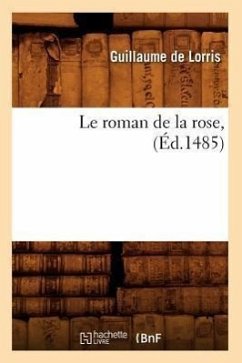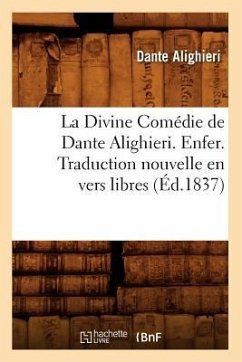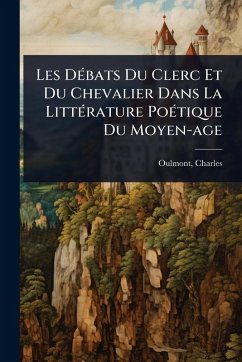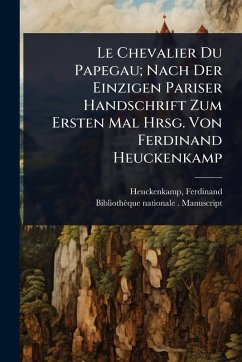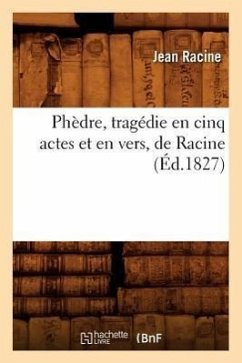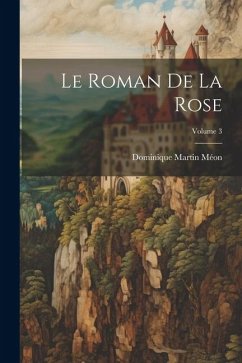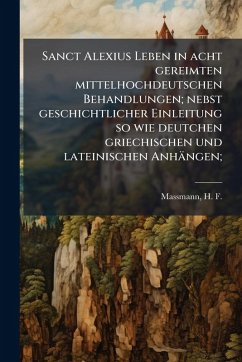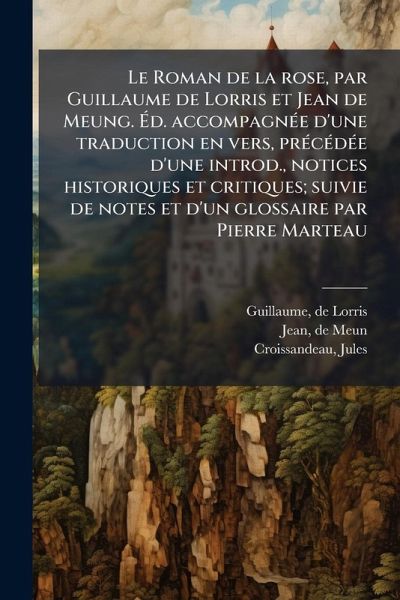
Le Roman de la rose, par Guillaume de Lorris et Jean de Meung. Éd. accompagnÃ(c)e d'une traduction en vers, prÃ(c)cÃ(c)dÃ(c)e d'une introd., notices historiques et critiques; suivie de notes et d'un glossaire par Pierre Marteau
Versandkostenfrei!
Versandfertig in über 4 Wochen
25,99 €
inkl. MwSt.
Weitere Ausgaben:

PAYBACK Punkte
13 °P sammeln!
Le Roman de la rose, by Guillaume de Lorris and Jean de Meung, is one of the most important works of Old French literature. This edition, edited with a verse translation, includes historical and critical notices, notes, and a glossary by Pierre Marteau. "Le Roman de la rose" is an allegorical dream vision, exploring the themes of courtly love. Guillaume de Lorris began the poem around 1230, and Jean de Meung completed it later in the thirteenth century. This influential work provides invaluable insight into medieval culture, thought, and literary traditions, remaining a cornerstone of French l...
Le Roman de la rose, by Guillaume de Lorris and Jean de Meung, is one of the most important works of Old French literature. This edition, edited with a verse translation, includes historical and critical notices, notes, and a glossary by Pierre Marteau. "Le Roman de la rose" is an allegorical dream vision, exploring the themes of courtly love. Guillaume de Lorris began the poem around 1230, and Jean de Meung completed it later in the thirteenth century. This influential work provides invaluable insight into medieval culture, thought, and literary traditions, remaining a cornerstone of French literary study. This work has been selected by scholars as being culturally important, and is part of the knowledge base of civilization as we know it. This work was reproduced from the original artifact, and remains as true to the original work as possible. Therefore, you will see the original copyright references, library stamps (as most of these works have been housed in our most important libraries around the world), and other notations in the work. This work is in the public domain in the United States of America, and possibly other nations. Within the United States, you may freely copy and distribute this work, as no entity (individual or corporate) has a copyright on the body of the work. As a reproduction of a historical artifact, this work may contain missing or blurred pages, poor pictures, errant marks, etc. Scholars believe, and we concur, that this work is important enough to be preserved, reproduced, and made generally available to the public. We appreciate your support of the preservation process, and thank you for being an important part of keeping this knowledge alive and relevant.



